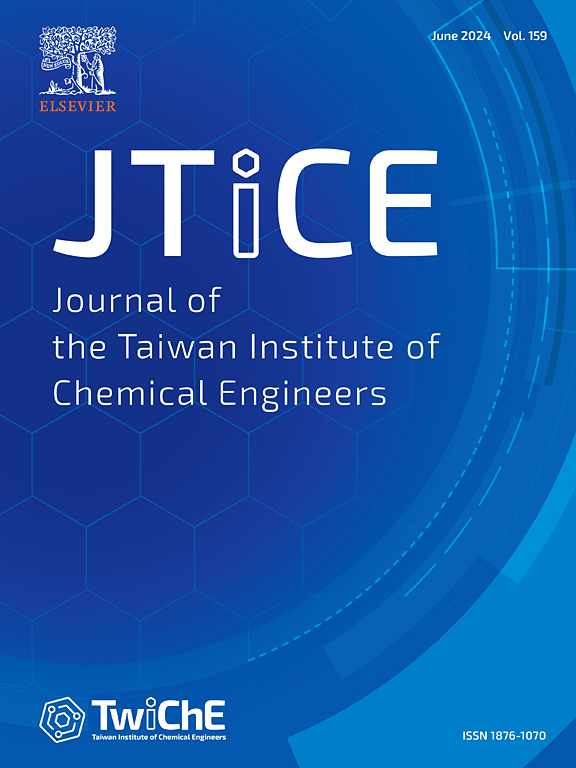Experimental Investigation of Carbon-Based Nano-Enhanced Phase Change Materials Assimilated Photovoltaic Thermal System: Energy, Exergy and Environmental Assessment
IF 5.5
3区 工程技术
Q1 ENGINEERING, CHEMICAL
Journal of the Taiwan Institute of Chemical Engineers
Pub Date : 2025-02-01
DOI:10.1016/j.jtice.2024.105835
引用次数: 0
Abstract
Background
Photovoltaic thermal systems (PVT) are advanced systems designed to simultaneously generate heat and electricity. However, their commercial performance has not yet reached optimal levels, with efficient thermal regulation being a major challenge that directly affects energy production and efficiency.
Methods
This research introduces an innovative approach to enhancing PVT system performance by integrating active water cooling with passive functionalized carbon-based nano-enhanced phase change materials (NePHACMs) as a cooling medium. Four configurations were studied: PV, PVT, PVT-PHACM, and PVT-NePHACM, with fluid flow rates of 0.4-0.8 L/min. Indoor experiments were conducted for PV and PVT systems, while TRNSYS simulations assessed PVT-PHACM and PVT-NePHACM systems. The exergy approach was used to evaluate the energy available for productive use and exergy loss and entropy generation have been analyzed to enhance the electrical energy and thermal storage of the system. Additionally, carbon mitigation and carbon credit gain for all configurations were discussed.
Significant Findings
The NePHACM formulation significantly enhanced the system's thermal conductivity by 104%, reduced PV temperature, and improved both electrical and thermal energy production. The system achieved an overall energy efficiency of 85.02% and an exergy efficiency of 12.37%. Additionally, the hybrid system demonstrated exceptional effectiveness in reducing CO2 emissions, highlighting NePHACM's potential to improve PVT system commercialization, especially for nocturnal applications.

求助全文
约1分钟内获得全文
求助全文
来源期刊
CiteScore
9.10
自引率
14.00%
发文量
362
审稿时长
35 days
期刊介绍:
Journal of the Taiwan Institute of Chemical Engineers (formerly known as Journal of the Chinese Institute of Chemical Engineers) publishes original works, from fundamental principles to practical applications, in the broad field of chemical engineering with special focus on three aspects: Chemical and Biomolecular Science and Technology, Energy and Environmental Science and Technology, and Materials Science and Technology. Authors should choose for their manuscript an appropriate aspect section and a few related classifications when submitting to the journal online.

 求助内容:
求助内容: 应助结果提醒方式:
应助结果提醒方式:


